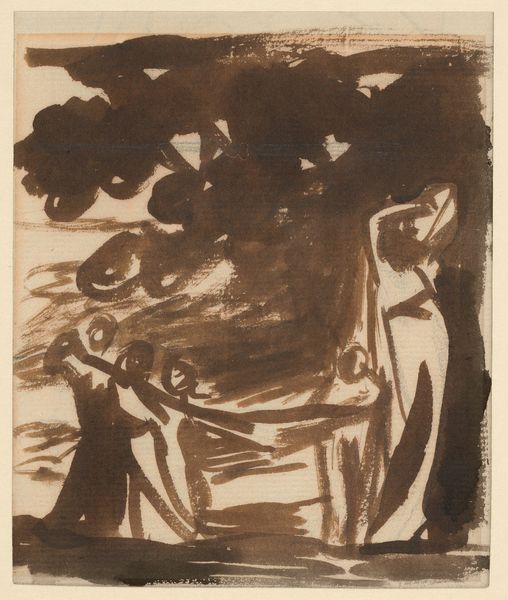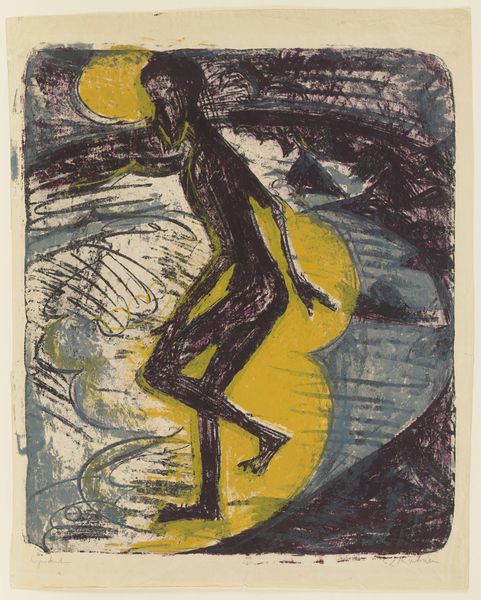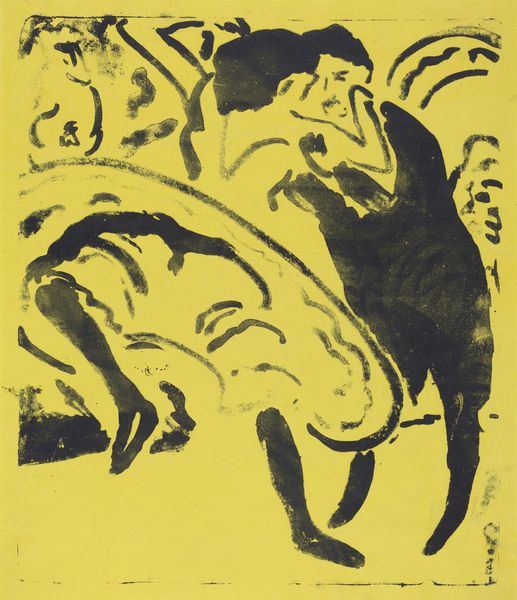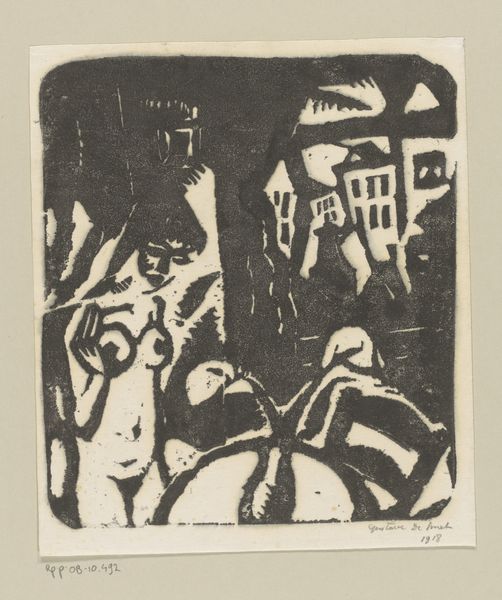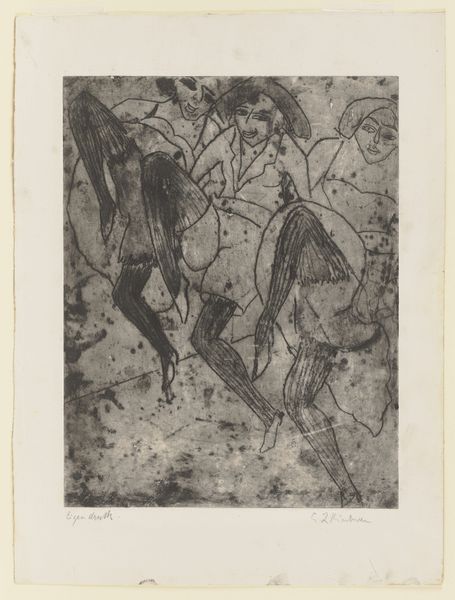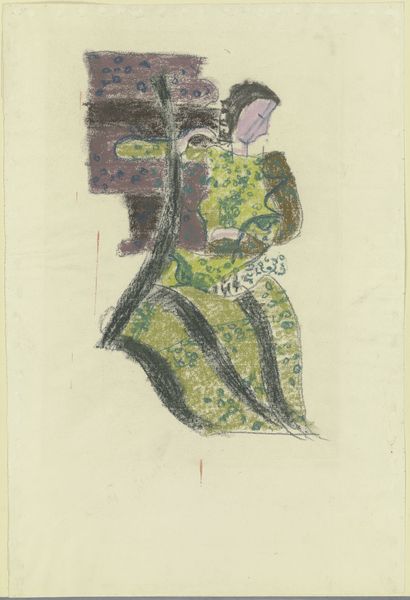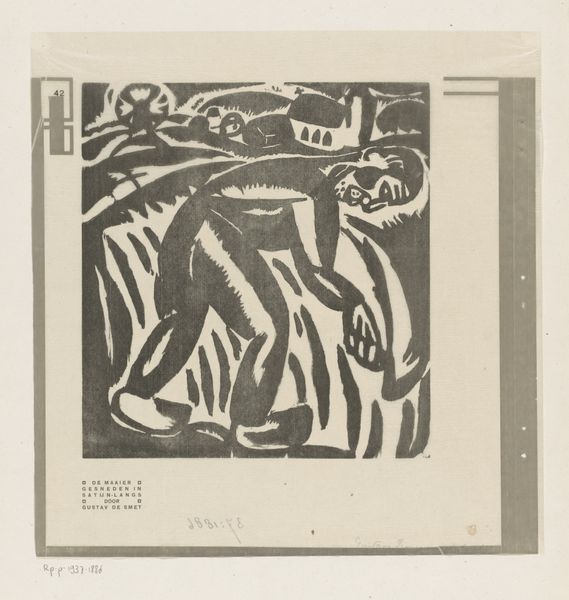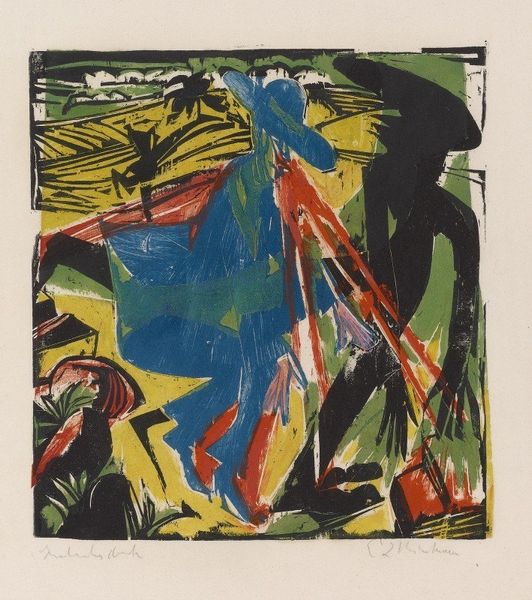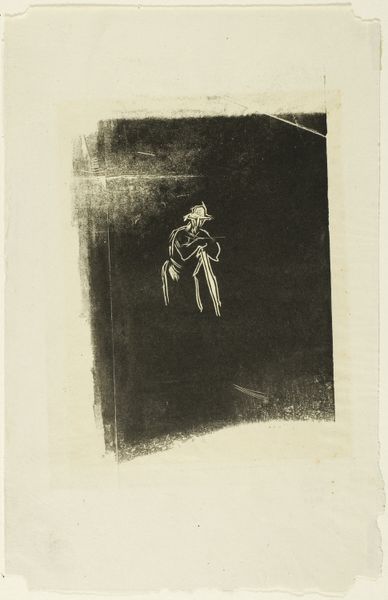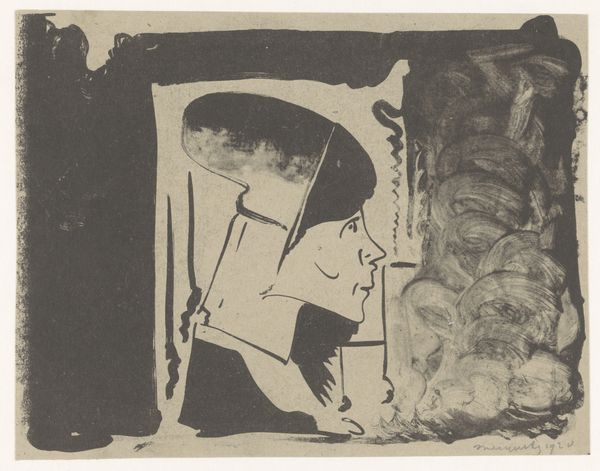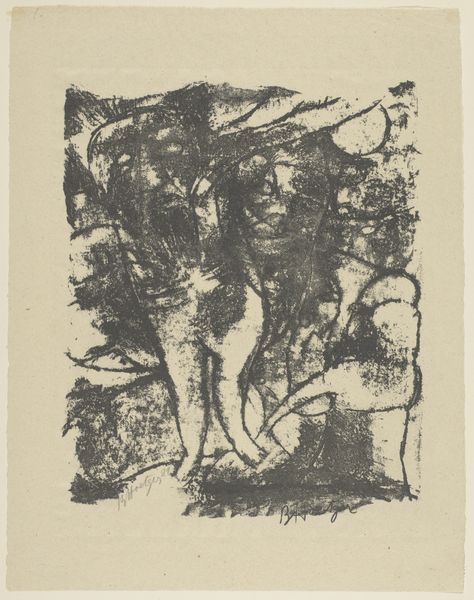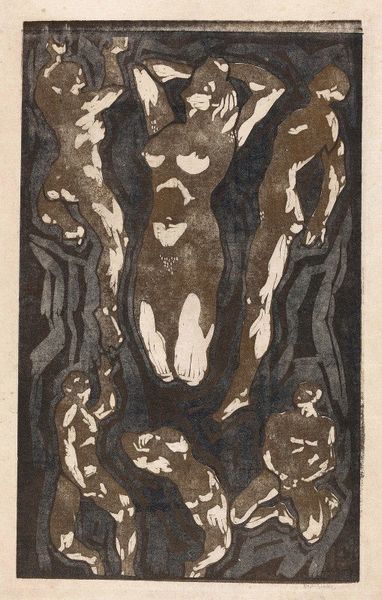
drawing, print, woodcut
#
drawing
# print
#
caricature
#
german-expressionism
#
figuration
#
expressionism
#
woodcut
Copyright: Public Domain
Curator: Ernst Ludwig Kirchner created "Tattersall," originally titled as such, in 1909. It's a woodcut, currently residing in the Städel Museum. Editor: My first impression is a feeling of confinement, almost oppression. The heavy, dark masses of the horses dominate the composition. Is the Tattersall the name of a specific horse market? Curator: Exactly. Tattersalls were established as horse auction houses in the 18th century, becoming potent symbols of commerce and class. Kirchner depicts a woman viewing horses; the site representing more broadly an industrial society that reduces animals, and even people, to commodities. Editor: That clarifies the image's discomforting tone. I see the stark contrasts in color now, the rough texture of the woodcut amplifying the rawness of the scene. The woman has her arms crossed, but there's a vulnerability to her posture. Her averted gaze is so symbolic...almost suggesting an aversion to a transaction taking place. What can you tell me about its reception at the time? Curator: Expressionism was just starting to shock and galvanize the German art scene. Remember, the Brücke group, of which Kirchner was a key member, was actively challenging academic art traditions and critiquing modern society through provocative imagery. This work, with its emphasis on emotional intensity, probably received mixed responses, admired by some as innovative and decried by others as vulgar. Editor: It's remarkable how that tension resonates even today. The stylization of the figures borders on caricature. Do the horses symbolize more than commerce? I can almost detect the looming shadow of the war years in the stark colors. Curator: Many interpret them as metaphors for power, but also potential casualties. Think of the immense role horses played in World War I, both on the battlefield and in agricultural labor back home. This print anticipated, perhaps unconsciously, that tragic intersection of industry, social dynamics, and equine suffering. Editor: Considering that the woman in this print is placed in this arena between the buyer/viewer and the sold animal; perhaps she’s another being about to be evaluated, observed. It brings up new meanings of these scenes that play out over and over again across human history and in today’s modern environment. Curator: Looking at "Tattersall" reminds us that art doesn’t exist in a vacuum; it reflects, and is shaped by, its social and political context. Editor: It is quite poignant, highlighting through the universal language of symbols—be they horses or human figures—what’s repeated over time, consciously or unconsciously.
Comments
stadelmuseum almost 2 years ago
⋮
The term “Tattersall” – after the successful London horse trainer Richard Tattersall (1724–1795) – came into use in Germany back in the late nineteenth century to refer to certain riding halls and arenas. Kirchner rendered the proud equestrienne with the two blacks in tension-filled contrast. He countered the nearly linear grain of the wood in the green blouse with the ‘cloudy’ orange that forms the background and lends the black a vibrant chromatic quality.
Join the conversation
Join millions of artists and users on Artera today and experience the ultimate creative platform.
